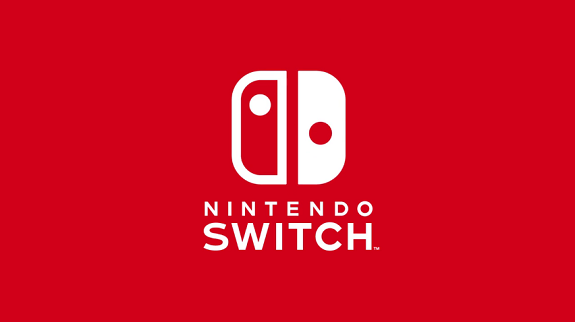Nintendo Investor Briefing (Oct. 2017) – Kimishima on the Nintendo Switch
During the latest Nintendo Investor Briefing, Tatsumi Kimishima talked at great lengths about the Nintendo Switch. For this console, the company’s message has been pretty simple and straightforward: it’s a home console that you can take with you. And unlike the Wii U, that message resonated pretty well with consumers, leading to worldwide sales exceeding Nintendo’s initial forecasts and hardware production capacities.
Naturally, this has led to almost uninterrupted shortages, making it hard for people interested in the console to get their hands on one.
One of the key aspects of the console is that you can play it either on the TV, or in Handheld/Tabletop Mode. But how exactly are players using their console? Here’s a graph with the answer to that very question:

This graph (based on figures from registered Nintendo Account users, gathered via the internet) shows that the majority of users play the console in both modes (50%), with 30% playing it primarily in Tabletop or Handheld Mode, and only 20% playing it in TV Mode primarily. In other words, players are playing using the play styles that best suit their tastes and needs, which is pretty much what the console itself is all about.
The following graph shows the age and gender of people buying the console in the United States (results based on survey sent to Nintendo Account users in the United States, in October):

It shows that the vast majority of Nintendo Switch buyers are in their 20’s and early 30’s, though there’s also strong interest from consumers in their teens. Nintendo is actually quite looking forward to growth in that particular demographic.
The next graph shows sales of the Nintendo Switch, the Wii U, and the Wii during their first year, in the United States and Canada:

One thing to keep in mind looking at that graph is that the Nintendo Switch was launched in March, while the Wii and Wii U released right at the beginning of the holiday season.
The following graph shows the same thing as the previous one, but for the European market this time around:

And finally, the third graph is about the Japanese market:

The shortages mentioned above have impacted all markets, and the Nintendo Switch would have seen further growth had they been better prepared from the start.
One of the things Nintendo did focus on was on offering a steady stream of releases, in order to maintain the buzz through the rest of the year. To that effect, the company released:
- The Legend of Zelda and 1-2-Switch at launch
- Mario Kart 8 Deluxe in April
- ARMS in June
- Splatoon 2 in July
- and more…
One thing all those games have in common (barring Zelda, obviously) is that they are multiplayer-focused titles, allowing players to enjoy them with their friends. One of Nintendo’s goals was to promote longer play on Nintendo Switch, and such titles are indeed a good way achieve that: they’re not really Single-Player games you finish in a dozen hours, never to be touched again.
Nintendo also mentions the various titles from third-party publishers, and how they helped giving the sense that the Nintendo Switch had many games available early. This helped “cement” people’s decision to buy the Nintendo Switch: after all, the majority of them don’t buy new consoles just for one or two games.
The following graph compared the sale of the 5 first-party titles released this year on Nintendo Switch:

In Europe and the United States, the most popular games are basically the same. But in Japan, Splatoon 2 is clearly dominating, with The Legend of Zelda: Breath of the Wild and Mario Kart 8 Deluxe still selling pretty well. But one thing’s clear: no game is monopolising sales in any of the 3 markets, which is a positive sign: it shows there’s interest for all 5 games.
The following graph shows the weekly number of consoles that both include a registered Nintendo Account and are connected to a network during gameplay:

The graph shows that once people have their Nintendo Switch, they play it… and they keep playing it as new games are released. Even between releases, there’s no significant drops, and each new release leads to an increase in usage: now that’s what a healthy console looks like!
Also, thanks to the Nintendo Switch, digital sales for the first half of the current Fiscal Year have reached an all-time high at 22.8 billion Yen. It looks like this Fiscal Year is easily going to beat FY3-2016, and without any Super Smash Bros. DLC. With the steady stream of quality releases on the Nintendo eShop, we can expect digital sales to remain pretty high throughout the rest of the year, and in 2018.

The holiday season is almost upon us, and it’s a pretty important one for Nintendo: it’s the first one for the Nintendo Switch, after all! The company’s challenge will be to be able to attract a wide range of customers. One thing they are focusing on is dealing with those pesky shortages, the company is expanding its production structure to meet both domestic and overseas demand.
With those shortages, even if there are games someone wants to play, they may not even be able to get the console in the first place. Naturally, that’s something Nintendo want and should fix asap, but at the very least, already-released titles offer “big opportunities” for Nintendo during the upcoming holiday periods, and they should support a long tail for Hardware sales.
After all, unless they simply decide to give up after a while, someone who couldn’t find the console in stores will eventually be able to do so, and at that time, they will buy the games that interested them in the console in the first place. That’s why it’s important for Nintendo to be able to get rid of shortages as soon as possible.
For the holiday seasons, Nintendo will rely on the following key titles:
- second DLC pack for The Legend of Zelda: Breath of the Wild + new the Champions amiibo
- Snipperclips Plus: Cut it out, together
- ongoing free updates for ARMS
- ongoing free updates for Splatoon 2
The free updates are part of Nintendo’s strategy, that consists in making sure users keep playing, even if it’s just one game. Nintendo also believes those efforts will also benefit released games, and convinced users to buy more games.
And of course, let’s not forget about Xenoblade Chronicles 2, which is getting a worldwide release on December 1st… the first time ever for the Xenoblade series.
As weeks go by, more and more publishers and developers are interested in the Nintendo Switch: according to Nintendo, there’s now 300 of them currently developing games for at the moment (including indies). They see this new platform as an opportunity to expand their business moving forward.
Here’s some of the games currently in development for the Nintendo Switch:

As you can see, the line-up is pretty varied, with titles appealing to players of all ages. For Nintendo, broadening the user base is crucial, as it makes it easier for publishers to be successful on the platform. And to further facilitate the creation of successful third-party titles on Nintendo Switch, Nintendo is going to continue their work in establishing a collaborative framework.
In other words, expect more collaborations in the coming months and years, such as project Octopath Traveler being published by Nintendo in the west for example.
On the Japanese market, the Nintendo Switch is starting to appeal to children and women, which isn’t quite the case in Europe and North America just yet. However, there’s some positive signs: purchase intent is trending upwards among children and people in their 30s, but also among junior and high school students, people in ther 20s, both male and female.
Nintendo’s goal moving forward is to expand the userbase, by appealing to more people, among both gamers and families.
For the current Fiscal Year, Nintendo is not expecting to sell at least 14 million units of the Nintendo Switch, bringing the total since launch to over 16 million units (the cosole sold 2.7 million in March).
Source: Nintendo Investor Briefing (October 2017)

